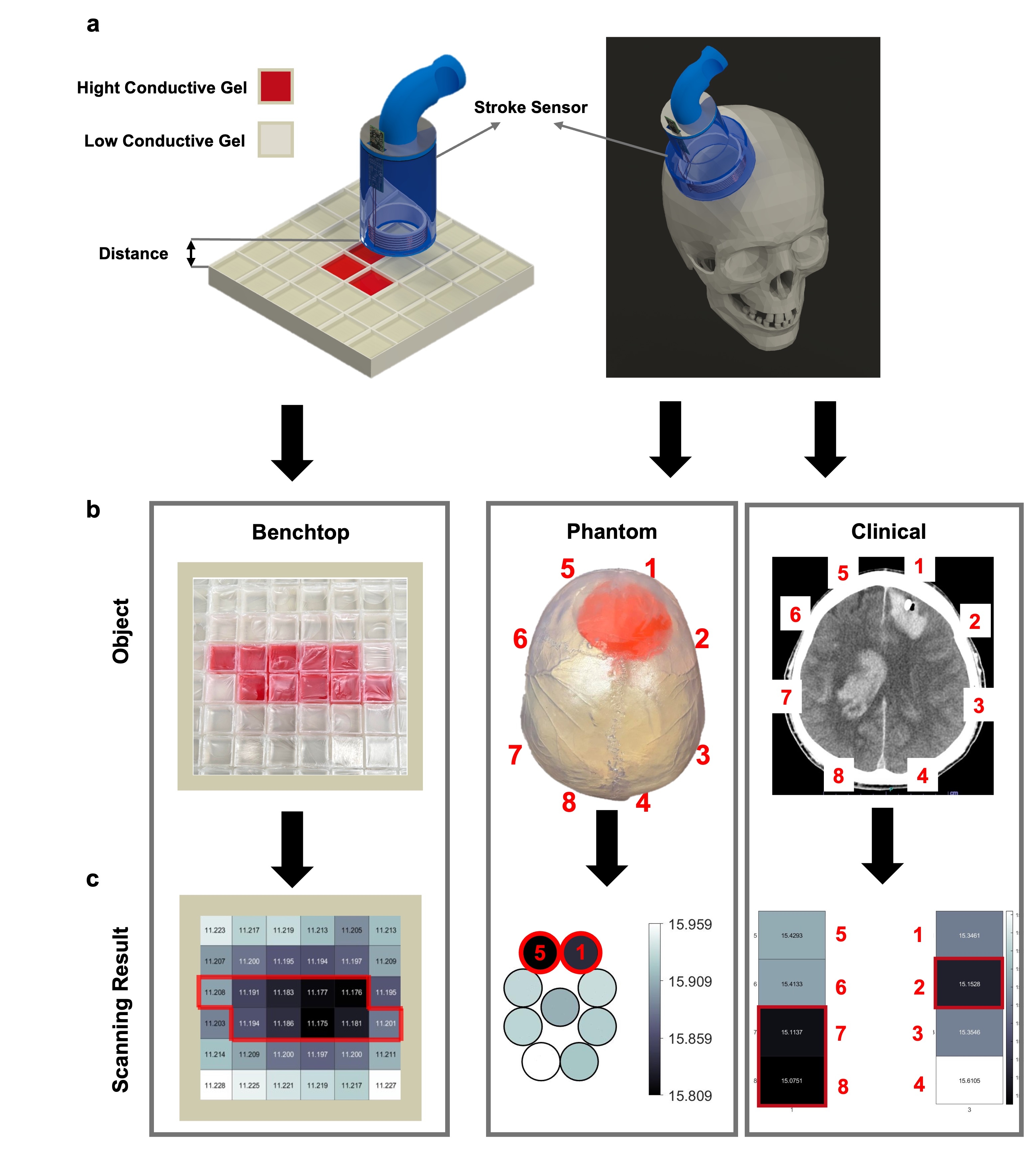Final ID: LBP62
Portable Noninvasive Transcranial Sensor for Early Stroke Diagnosis in Ambulatory and Bedside Settings.
Hypothesis: Eddy current damping sensors, commonly employed in automotive and aerospace applications for flaw detection, operate through indirect, non-contact electrical conductivity measurements. We hypothesize that patients with intracranial bleeding exhibit elevated conductivity due to iron ions in blood pools, differentiating them from healthy individuals.
Objectives: This technology leverages eddy current damping sensors as an affordable, portable option to triage hemorrhagic stroke patients in settings with limited access to CT and MRI, such as rural or combat environments. Immediate detection capabilities could markedly improve stroke management and patient outcomes.
Methods: Our teams at the University of Southern California and the California Institute of Technology conducted benchtop, phantom, and clinical experiments. Benchtop and phantom tests simulated various stroke sizes, depths, and locations. Additionally, IRB-approved clinical trials are underway at USC Keck School of Medicine, involving patients admitted for cerebral hemorrhage, edema, or hematoma with a CT and/or MRI, excluding those who have undergone draining, clipping, or craniotomy.
Findings: The sensor reliably detected conductivity differences between normal brain tissue and stroke regions across benchtop, phantom, and clinical settings. In the benchtop setup, 462 data points yielded a sensitivity of 90%, while phantom setup results from 40 data points showed a sensitivity of 100%. Clinical trials with 34 patients resulted in a sensitivity of 83%, underscoring the device’s potential effectiveness in clinical scenarios.
Conclusion: This portable eddy current damping sensor demonstrates high sensitivity and specificity for real-time, noninvasive differentiation between hemorrhagic stroke patients and healthy individuals.
More abstracts on this topic:
Wong Ka-ho, Krothapalli Neeharika, Littig Lauren, Champagne Alison, Majersik Jennifer, Reddy Vivek, De Havenon Adam
A distinct clot transcriptomic signature is associated with atrial fibrillation-derived ischemic stroke in the INSIGHT RegistrySeah Carina, Rivet Dennis, Fraser Justin, Kellner Christopher, Devarajan Alex, Vicari James, Dabney Alan, Baltan Selva, Sohrabji Farida, Pennypacker Keith, Nanda Ashish, Woodward Britton
Readers' Comments
We encourage you to enter the discussion by posting your comments and questions below.
Presenters will be notified of your post so that they can respond as appropriate.
This discussion platform is provided to foster engagement, and simulate conversation and knowledge sharing.
You have to be authorized to post a comment. Please, Login or Signup.

